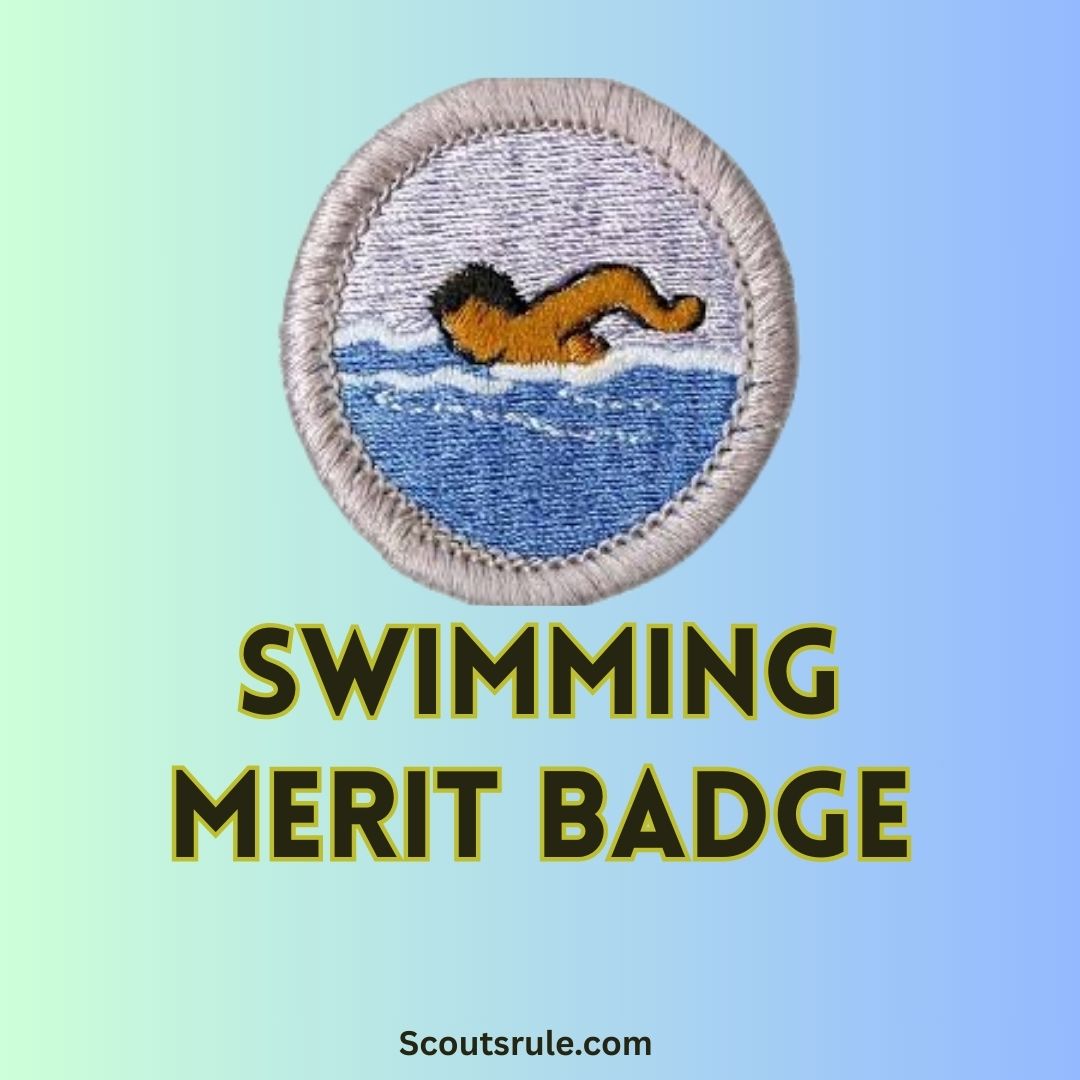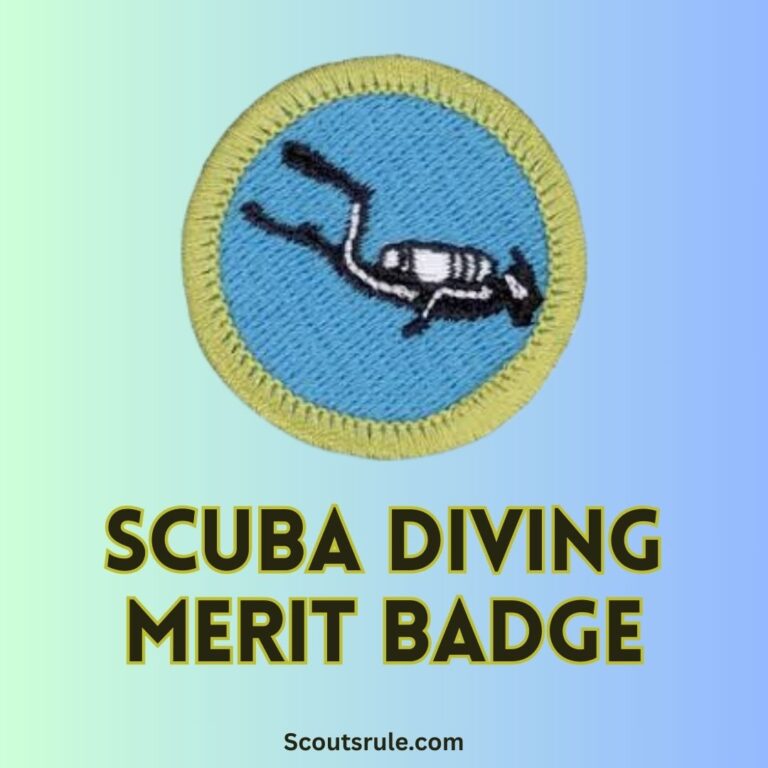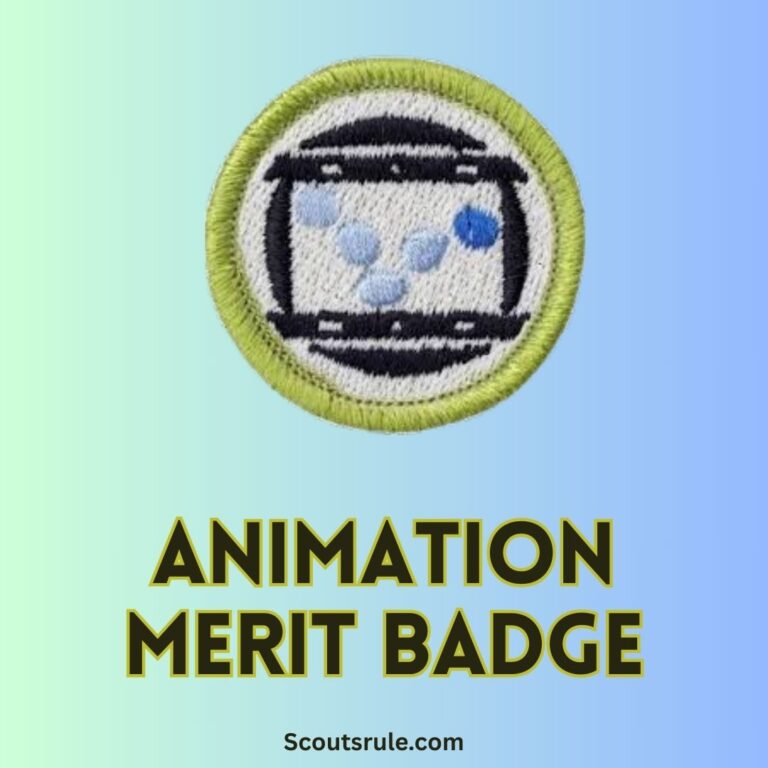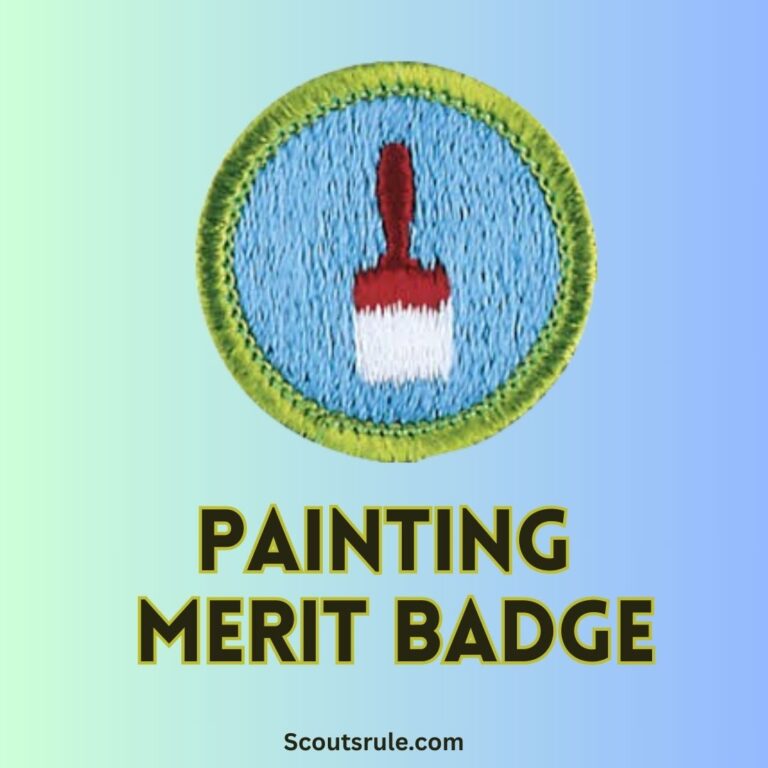
Swimming is not only fun and good for your health—it’s also a vital life skill. The Swimming Merit Badge challenges Scouts to develop proficiency in the water while emphasizing safety, rescue techniques, and awareness of health concerns that can arise during aquatic activities. Whether you’re training in a pool or practicing in open water, this badge will help you understand the importance of being cautious around water, improve your swimming ability, and prepare you for water-related emergencies.
This guide will walk you through the major components of the Swimming Merit Badge. You will explore concepts such as Scouting’s Safe Swim Defense plan, health concerns (like hypothermia and dehydration), and the proper techniques needed to pass the BSA swimmer test. In addition, you will be introduced to rescue methods, survival floating techniques, and the benefits of using multiple strokes. With the help of expert advice and practical tips, you’ll soon be on your way to conquering the water and earning your Swimming Merit Badge.
Post Contents
- 1. The Foundation of Water Safety: Safe Swim Defense
- 2. Passing the BSA Swimmer Test
- 3. Mastering Various Swimming Strokes and Techniques
- 4. Water Rescue Methods and Safety Guidelines
- 5. Additional Safety Considerations and Health Benefits
- 6. Practical Tips for Success
- 7. Exploring Additional Activities and Learning Opportunities
- 8. Preparing for the Final Evaluation
- 9. Troubleshooting Common Challenges
- 10. Final Preparation and Continuing Education
- Conclusion
1. The Foundation of Water Safety: Safe Swim Defense
One of the first requirements for the Swimming Merit Badge is an understanding of Scouting’s Safe Swim Defense plan. This program is designed to keep you and your fellow Scouts safe in aquatic environments.
1.1 Understanding the Safe Swim Defense Plan
The Safe Swim Defense plan is a comprehensive set of guidelines that anticipates risks, helps prevent incidents, and outlines responses if hazards arise while swimming. Key elements include:
- Qualified Supervision:
A trained lifeguard or an experienced adult must be present during most swimming activities. This ensures that help is immediately available if anything goes wrong. - Physical Fitness:
Being in good shape helps prevent exhaustion in the water. The plan encourages regular physical conditioning so that every participant can handle the physical demands of swimming. - Safe Areas:
Swimming should only take place in areas that have been inspected for hazards like deep water, strong currents, or hidden obstacles. - Buddy System:
Always swim with a buddy. This simple rule ensures that someone is always nearby in case one of you needs help. - Lifeguards/Lookouts:
In addition to having a buddy, having appointed lifeguards or lookouts enhances water safety by providing constant supervision. - Ability Groups:
Organizing swimmers by ability ensures everyone is challenged appropriately without being overwhelmed by more difficult conditions. - Discipline:
Strict adherence to set rules—including no running near the pool, no diving in risky areas, and no horseplay—minimizes danger. - Emergency Action:
Having a clear plan for what to do in case of an emergency (such as a rescue signal, a designated meeting spot, and rapid evacuation routes) is crucial.
When you explain the Safe Swim Defense plan to your counselor, be sure to address each of these points. This demonstrates that you understand how to help prevent, mitigate, and respond to aquatic hazards.
1.2 Prevention and Treatment of Health Concerns
Swimming, particularly when practiced regularly or in challenging conditions, can sometimes lead to health issues. Review and discuss the following concerns with your counselor:
- Hypothermia:
Extended exposure to cold water can lower your body temperature dangerously. Prevention includes wearing a wetsuit or appropriate clothing and knowing to limit exposure time. Treatment involves removing the affected individual from the water, warming them gradually, and seeking medical assistance if necessary. - Dehydration:
Even while swimming, you can become dehydrated. To prevent this, drink water before and after swimming sessions and be aware of signs of dehydration such as dizziness or dry mouth. - Sunburn:
In outdoor swimming, prolonged exposure to the sun can lead to sunburn. Use waterproof sunscreen and wear a hat when possible, and reapply frequently. - Heat Exhaustion/Heatstroke:
Overexertion on a hot day in the sun can lead to heat-related illnesses. Take regular breaks in the shade, monitor your body temperature, and rehydrate. - Muscle Cramps:
Sudden cramps can occur, especially if you are not well hydrated. Adequate fluid intake and proper warm‑up exercises help reduce this risk. - Hyperventilation:
Rapid and shallow breathing—possibly caused by panic—can lead to dizziness. Practice calming techniques, steady your breathing, and learn to recognize early symptoms before they worsen. - Spinal Injury:
Incorrect diving techniques or rough play in the water can result in spinal injuries. Always dive in approved areas and follow proper technique. - Stings and Bites, Cuts and Scrapes:
Be aware of aquatic life that might sting (like jellyfish) or bite. In case of cuts, apply pressure and disinfect the area before covering it with a bandage.
For each of these health concerns, be ready to discuss prevention strategies and first‑aid treatments as described in your First Aid training.
2. Passing the BSA Swimmer Test
Before you can complete the knowledge and practical requirements, you must first pass the BSA swimmer test. This test is designed to ensure that you are safe and competent in the water.
2.1 Swimmer Test Requirements
The swimmer test is typically done under the supervision of a qualified lifeguard or swimming instructor, and it requires you to demonstrate:
- Jumping Feet-First Over the Head in Deep Water:
This ensures that you can enter the water safely without risk of injury. - Swimming 75 Yards in a Strong Manner:
You must swim 75 yards continuously using one or more of the following strokes: sidestroke, breaststroke, trudgen (a type of freestyle stroke), or crawl. Doing so shows both endurance and proficiency in basic strokes. - Resting with a Backstroke for 25 Yards:
After the strong swim, you must also complete a 25-yard segment using an easy, relaxed backstroke as a way to recover while still maintaining control in the water.
The entire 100 yards must be completed in one continuous swim without stops and must include at least one sharp turn. Practice the transitions smoothly; a well-planned swim test is not just about speed but also maintaining proper form and safety throughout.
2.2 Preparation Tips
- Practice Regularly:
Work with a swim coach, parent, or experienced Merit Badge counselor to refine your techniques. - Strength and Endurance:
Build up your endurance through regular swimming sessions so that you can complete the required distance. - Technique Refinement:
Focus on effective breathing and stroke technique. This will lower your chances of fatigue and help you swim more efficiently. - Simulated Tests:
Time yourself and, if possible, have a practice run in a similar layout to the test area. Familiarity with the swim course will boost your confidence on test day.
3. Mastering Various Swimming Strokes and Techniques
Swimming is a versatile activity that involves using multiple strokes. The badge requires that you demonstrate proficiency in several strokes, as this ensures that you are versatile enough to deal with different water conditions.
3.1 Common Swimming Strokes
- Crawl (Freestyle):
Recognized as one of the most efficient strokes, the crawl involves alternating arm pulls and a flutter kick. It is typically the fastest stroke. - Breaststroke:
This stroke involves a simultaneous movement of the arms and a frog-like kick. It is often considered easier for beginners due to its rhythmic nature, though it requires good timing. - Sidestroke:
The sidestroke is an efficient, low-exertion stroke that is useful for long-distance swimming and lifesaving situations. It helps maintain a steady pace. - Trudgen:
An older technique, the trudgen stroke includes a combination of a strong arm pull with a modified kick. Some variants closely resemble modern freestyle with emphasis on a rhythmic, powerful stroke.
3.2 Benefits of Multiple Strokes
Learning multiple strokes allows you to:
- Adapt to Conditions:
Different strokes are better suited to varying water conditions. For example, breaststroke is useful in shallow water while freestyle may be preferred in deep pools. - Increase Endurance:
Alternating strokes during long swims can help prevent muscle fatigue and improve overall endurance. - Enhance Rescue Abilities:
In emergency or rescue situations, being proficient in different strokes can be crucial to adjusting your pace and preserving energy.
Practice each stroke under the guidance of an experienced instructor. Focus on technique and efficiency, ensuring that every stroke is performed safely and correctly.
4. Water Rescue Methods and Safety Guidelines
An important part of the Swimming Merit Badge focuses on water rescue procedures. Knowing how to assist someone who is in trouble in the water is a critical life-saving skill that builds on your overall swimming proficiency.
4.1 Basic Water Rescue Techniques
- Buddy System Rescues:
Always swim with a buddy and be prepared to help each other. If your buddy is in trouble, know that the first rule is to not put yourself in jeopardy. - Reach, Throw, Row, Tow:
Here are some standard rescue techniques: - Reach: If the person is within arm’s distance, extend your arm and encourage them to grab on.
- Throw: If they are further away, throw a flotation device or rescue buoy.
- Row: If you have a small boat or paddle board available, use it to approach safely.
- Tow: Once the victim is secured, tow them to safety while keeping a close eye on your own safety.
4.2 Performing a Line Rescue
A line rescue is a specific type of water rescue where a lifeline (such as a rope) is used to assist an individual in distress:
- As a Rescuer:
Understand how to secure a rope to a fixed object and use it to help bring the victim to safety without exposing yourself to additional danger. - As a Tender:
If you are the one in need of rescue, learn how to grab onto a rope and maintain a stable body position until help arrives.
Practice these techniques in safe, supervised environments. Your counselor or a qualified lifeguard can provide hands‑on training to ensure that you understand the principles behind these rescues.
4.3 Floating and Survival Skills
Survival skills such as floating can be critical if you unexpectedly get tired or injured:
- Back Float:
Practice floating on your back using gentle, rhythmic breathing. This helps conserve energy and keep you safe until further help arrives. - HELP and Huddle Positions:
If you are in cold water, learn the Heat Escape Lessening Posture (HELP) and huddle positions to conserve warmth while awaiting rescue. A U.S. Coast Guard‑approved life jacket should be used in critical conditions.
Understanding these survival techniques will not only boost your confidence but also prepare you to assist others in emergencies.
5. Additional Safety Considerations and Health Benefits
Swimming is an excellent form of aerobic exercise. It builds strength, endurance, and flexibility—all while protecting your joints due to the buoyancy of the water.
5.1 Preventing Common Health Issues
- Hypothermia:
Particularly in cold water, be aware that your body temperature can drop quickly. Learn how to monitor your body and take appropriate steps to warm up. - Overexertion:
Swimming for long periods can lead to fatigue. Pay attention to your body’s signals and take intervals if needed. - Sunburn and Dehydration:
When swimming outdoors, protect your skin with waterproof sunscreen and remember to hydrate frequently.
5.2 Health Benefits of Swimming
- Aerobic Fitness:
Swimming is a full-body workout that improves cardiovascular health. - Muscle Strength:
Different strokes work various muscle groups, from your core and legs to your back and shoulders. - Stress Reduction:
The rhythmic nature of swimming can have a calming effect, reducing stress and promoting overall well‑being. - Increased Flexibility:
The range of motion required for different strokes helps maintain and improve flexibility.
Engage in regular swim workouts to see improvements in your fitness level, and use these benefits as motivational points when discussing the Swimming Merit Badge with your counselor.
6. Practical Tips for Success
6.1 Training and Practice
- Regular Practice Sessions:
Set a schedule to practice all required strokes and endurance skills. Consistency is key to building confidence and ability. - Proper Instruction:
Work with a certified instructor, lifeguard, or experienced mentor who can provide feedback on your technique. - Gradual Increase:
Build up your endurance gradually; start with shorter distances and work your way up to the required 100‑yard continuous swim. - Drills and Technique Work:
Incorporate drills into your practice sessions that focus on specific strokes or rescue techniques. For instance, practice back floats in shallow water until they feel effortless.
6.2 Equipment and Pool Safety
- Use of Appropriate Swimwear:
Wear a comfortable swimsuit that allows for full movement. Goggles and caps not only improve your visibility under water but also prevent irritation. - Pool Safety:
Ensure that you practice in areas where a lifeguard is present or where you have been given permission to practice. Familiarize yourself with the pool layout, depths, and emergency protocols. - Protective Gear:
If working on rescue techniques or survival skills, always use a life jacket or flotation device when necessary.
6.3 Building Confidence
- Set Personal Goals:
Break down the swimmer test into achievable goals. Celebrate small victories on the way to completing the overall requirement. - Mindset and Preparation:
Focus on positive visualization; imagine yourself completing the test successfully. Preparation and a positive attitude go hand‑in‑hand. - Peer Support:
Practice with friends or other troop members. A supportive environment can help reduce anxiety and improve performance.
7. Exploring Additional Activities and Learning Opportunities
Once you have mastered the basic requirements, consider taking your swimming skills further:
- Competitive Swimming:
Join a swim team or club if you have an interest in competitive sports. The discipline of practice and teamwork can be both rewarding and fun. - Lifeguard Training:
Learning lifeguard skills will deepen your understanding of water rescue techniques and further reinforce safety practices. - Diving Lessons:
Try licensed diving or snorkeling courses to explore underwater environments in a safe and supervised manner. - Environmental Awareness:
Learn about aquatic ecosystems, the importance of water preservation, and the environmental impact of pool chemicals and water treatment. These topics might inspire further projects on sustainable water practices.
Each of these activities not only complements the requirements of the badge but also contributes to your lifelong learning and enjoyment of aquatic activities.
8. Preparing for the Final Evaluation
As you near the completion of your Swimming Merit Badge requirements, it’s time to gather all your documentation and prepare for your final evaluation with your merit badge counselor.
8.1 Documentation
- Swimmer Test Record:
Keep a written record of your practice sessions, improvements, and the final swimmer test. Record the distance you swam, the strokes used, and any challenges faced. - Health and Safety Discussions:
Write down details and lessons learned from your discussions about the Safe Swim Defense plan, prevention and treatment of health concerns, and water rescue techniques. - Personal Reflections:
Maintain a journal that documents your swimming progress, recorded techniques, and the feedback received from instructors, peers, or counselors. - Visual Aids:
Include photos or diagrams where applicable—such as sketches of rescue techniques or notes on the proper use of safety equipment.
8.2 Final Review and Presentation
- Practice Your Explanations:
Prepare to explain each part of the requirements to your counselor. This may include describing the Safe Swim Defense plan, detailing the health precautions, and demonstrating your proficiency in different strokes. - Mock Evaluation:
Arrange a practice review with a trusted leader or a parent acting as the counselor. This will help build confidence and identify any areas needing additional practice. - Demonstration:
Be ready to perform a short demonstration of a rescue technique or a particular swimming stroke if requested.
Thorough preparation will ensure your final evaluation is successful and that you are confident in your abilities as both a swimmer and a potential water rescuer.
9. Troubleshooting Common Challenges
Even the most seasoned swimmers face obstacles. Here are some common challenges and ways to overcome them:
- Fatigue During the Swimmer Test:
- Solution: Gradually increase your endurance with target distance drills and focus on proper breathing techniques.
- Anxiety or Nervousness:
- Solution: Practice in a controlled, safe environment with a supportive group. Use breathing exercises to calm nerves and visualize a successful outcome.
- Inconsistent Stroke Technique:
- Solution: Ask an experienced instructor for specific tips on your strokes. Video recordings of you swimming can help identify flaws and allow you to correct them.
- Water Rescue Technique Uncertainty:
- Solution: Attend additional training sessions or watch instructional videos on water rescue and survival techniques. Practice these skills under the guidance of a lifeguard.
- Weather or Facility Issues:
- Solution: If outdoor conditions are less favorable, practice in an indoor pool where conditions are controlled until you are comfortable with all techniques.
By anticipating challenges and approaching them systematically, you will not only earn your badge but also gain the resilience and adaptability required in real emergency situations.
10. Final Preparation and Continuing Education
After you’ve completed all the requirements and collected the necessary documentation, it’s important to remember that the Swimming Merit Badge is only the beginning of your journey in water safety and aquatic skills.
- Review and Update:
Competency in swimming and rescue techniques should be maintained and periodically refreshed. Consider regular practice sessions, and update your safety knowledge as guidelines change. - Lifelong Benefits:
The skills you develop here not only prepare you for emergencies; they enhance your overall fitness, boost your confidence, and open up opportunities for further aquatic-related certifications, such as lifeguarding or diving. - Community Involvement:
Share what you have learned with your troop, family, and community. Lead a water safety workshop, or help organize a swimming event to promote safe aquatic practices.
Through ongoing practice and education, your passion for swimming and water safety will continue to grow—and it will help keep you and others safe in and around water.
Conclusion
The Swimming Merit Badge is much more than a test of your physical ability—it is a multifaceted journey that teaches water safety, emergency preparedness, and effective swimming techniques. By understanding the Safe Swim Defense plan, mastering various strokes, learning rescue techniques, and preparing thoroughly for the swimmer test, you become not only a stronger swimmer but also a responsible, confident water safety advocate. Every practice session, every drill, and every improvement will serve you well in all your aquatic endeavors. Embrace the challenge, continue learning, and let the water be both your playground and your training ground.
Happy swimming, and may the lessons learned guide you safely every time you dive in!

Hi, Robin here, A former lead Scout and here I share my inspiring stories about USA Scouts, leadership, adventure, how to guides and more.






